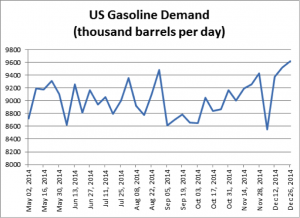Yellowstone River oil spill contaminates drinking water in Montana town
Residents of the town of Glendive, in eastern Montana, are being told not to drink or cook with water from the city’s supply after a weekend oil spill that send 50,000 gallons of crude into the Yellowstone River.
The river flows downstream from Yellowstone National Park, and the site of the spill is some 400 miles from the park’s entrance, along the border between Montana and Wyoming.
But Saturday’s spill — the equivalent of 1,200 barrels of oil extracted from the Bakken shale-rock formation in Montana and North Dakota — caused elevated levels of the cancer-causing compound benzene to turn up in the local water supply. Officials in the city of 6,000 are trucking in bottled water, and residents were warned not to use water out of the tap.
The Los Angeles Times quoted Glendive Mayor Jerry Jimison:
“It is an inconvenience for everyone in the community, no doubt. But we have truckloads of water being supplied, and the company has taken full responsibility, stepping up to the plate and helping bring everything back to normal.”
The pipeline is owned by Bridger Pipeline, a subsidiary of a Wyoming company called True Cos. That company said in a statement that a 12-inch section of the Poplar Pipeline had breached Saturday at 10 a.m. The company said the pipeline was shut down within an hour of the leak, and that “all relevant local, state and federal authorities” had been notified. More than 50 people were working to clean up the spill, the Times reported.
“Our primary concern is to minimize the environmental impact of the release and keep our responders safe as we clean up from this unfortunate incident,” Tad True, vice president of Bridger Pipeline, said in the statement.
Montana’s Department of Environmental Quality said the city draws its drinking water supply from an intake structure about 14 feet beneath the surface of the river, about 7 river miles downstream from the breach.
“Product sheen has been observed on the river almost to Sidney,” about 50 miles downriver from Glendive, the agency said. “No other community water supplies draw from the Yellowstone River downstream of the release in Montana.”
As National Geographic noted, this is the “second sizable oil spill” on the Yellowstone River in the last four years:
Another spill into Yellowstone River occurred 235 miles southwest of Glendive in July 2011, when an ExxonMobil pipeline broke near Laurel, Montana, and released 63,000 gallons of oil that washed up along an 85-mile stretch of riverbank.
NatGeo says that after the latest spill, “initial water tests showed no evidence of oil, but residents soon complained that their tap water had an unusual odor. The city’s water advisory was issued late Monday. The Times says benzene has a sweet odor and can be hazardous over time.


